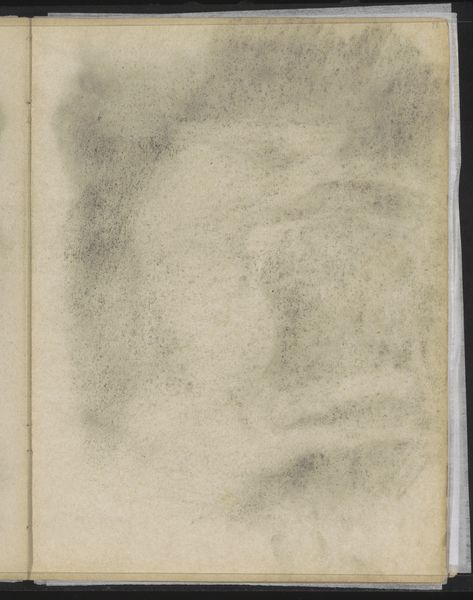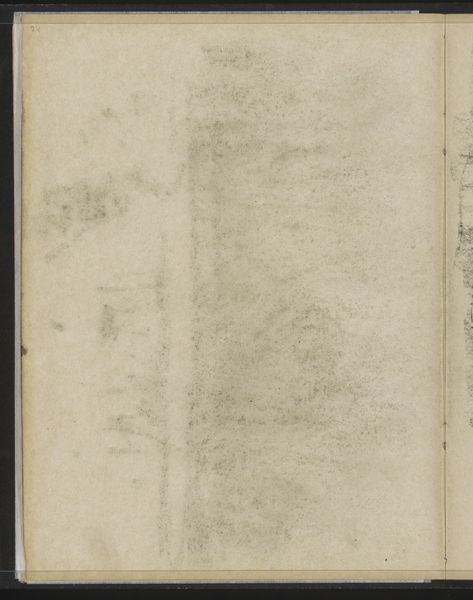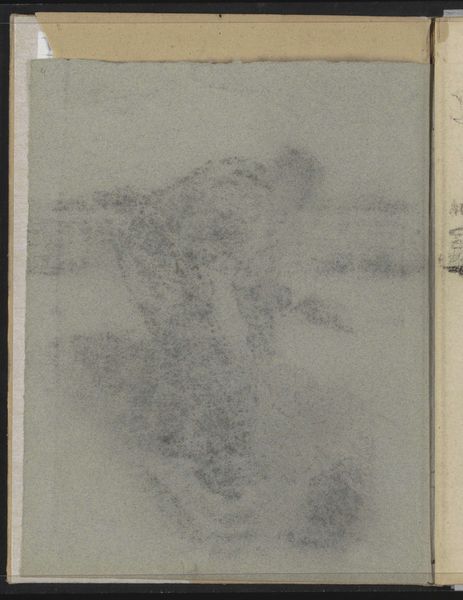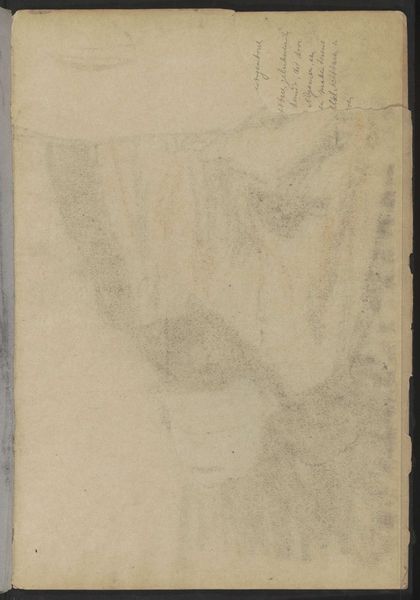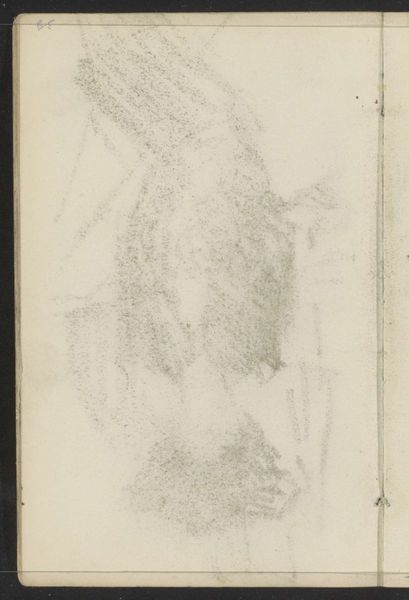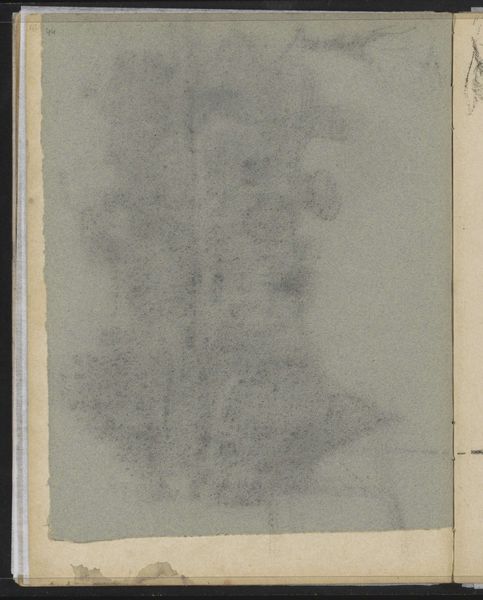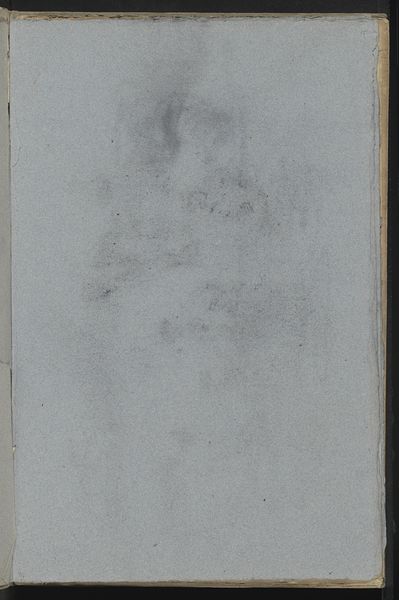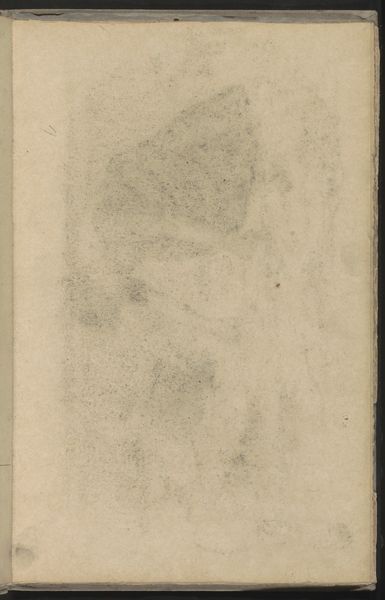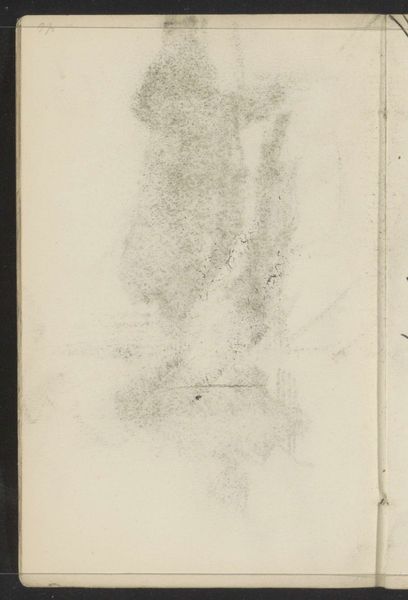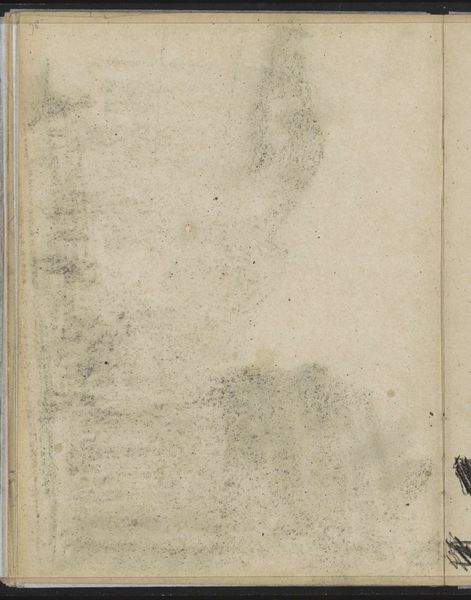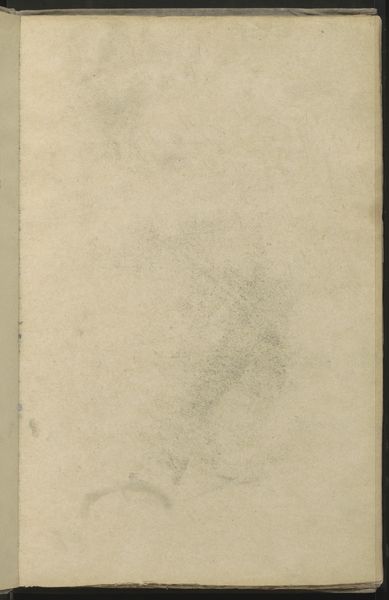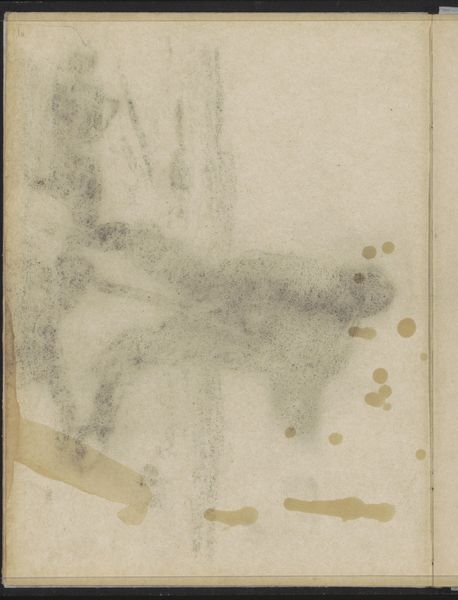
drawing, coloured-pencil, paper, pencil
#
drawing
#
aged paper
#
coloured-pencil
#
paper
#
coloured pencil
#
pencil
Copyright: Rijks Museum: Open Domain
Curator: This intriguing drawing is titled "Abklatsch van de krijttekening op pagina 43," created by Willem Witsen around 1886 to 1891. The Rijksmuseum holds this intriguing piece rendered in pencil and colored pencil on paper. Editor: My initial impression is of something ghostly. There are faint impressions barely visible on what looks like aged paper. The tonal range is very subtle. Curator: An "abklatsch" refers to a transfer or impression, offering us a glimpse into Witsen's working process. The drawing provides clues about artistic networks of the era. Think about artists sharing sketchbooks and ideas in late 19th-century artistic circles. Editor: It does seem incomplete somehow. I am captivated by how little information Witsen gives us. This technique serves to fragment and abstract form. It verges on abstract expressionism avant la lettre. Curator: Considering the broader context, Witsen was part of the Amsterdam Impressionism movement. The style of Amsterdam Impressionism captures fleeting moments of daily life and an interest in representing atmosphere, so a reproduction like this opens discussions around the aura of a drawing and the importance of the artistic community to art making. Editor: Exactly! It forces you to consider how much is actually present and visible, playing on suggestion rather than declaration. And the restricted palette only reinforces that mood of ambiguity. It's less about the thing depicted, and more about… absence. Curator: That resonates with how the work itself acts as a type of record or archive, alluding to his wider practice as an artist deeply entrenched in the social milieu of late 19th-century Amsterdam. This fragment provides a fascinating window into his creative world. Editor: Yes, the more you look, the more questions arise regarding intention. This work seems less about pure visual experience, and more like an intellectual and historical puzzle! Curator: It makes us appreciate not just the final piece, but the processes of artistic collaboration and dissemination that were present in this era. Editor: Agreed, and for me it underscores the power of suggestion in art, where less can truly be more impactful.
Comments
No comments
Be the first to comment and join the conversation on the ultimate creative platform.

